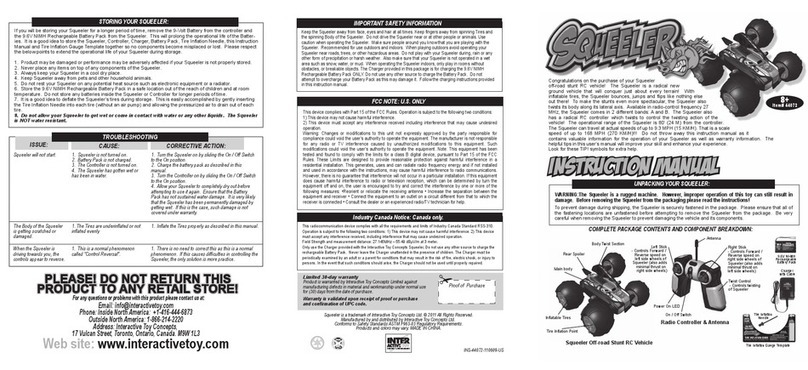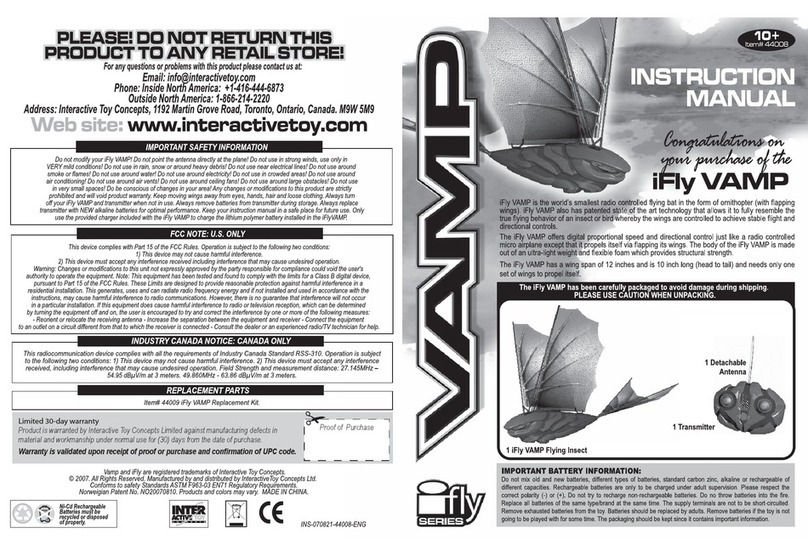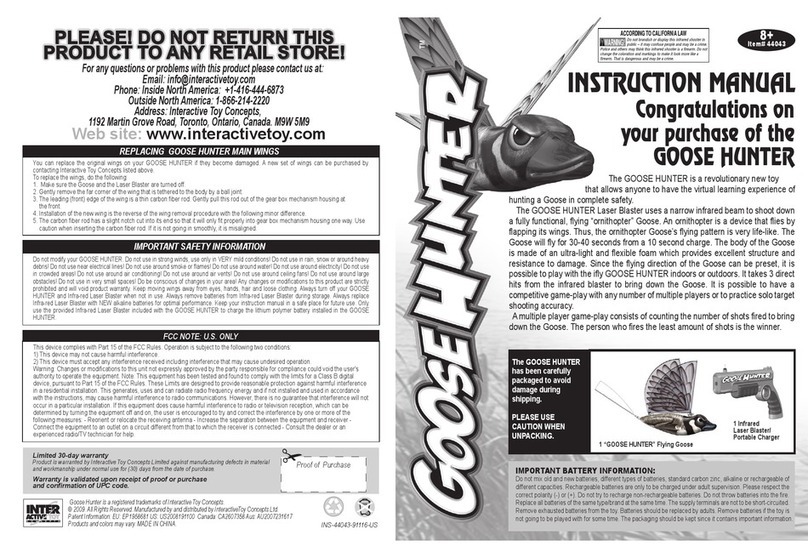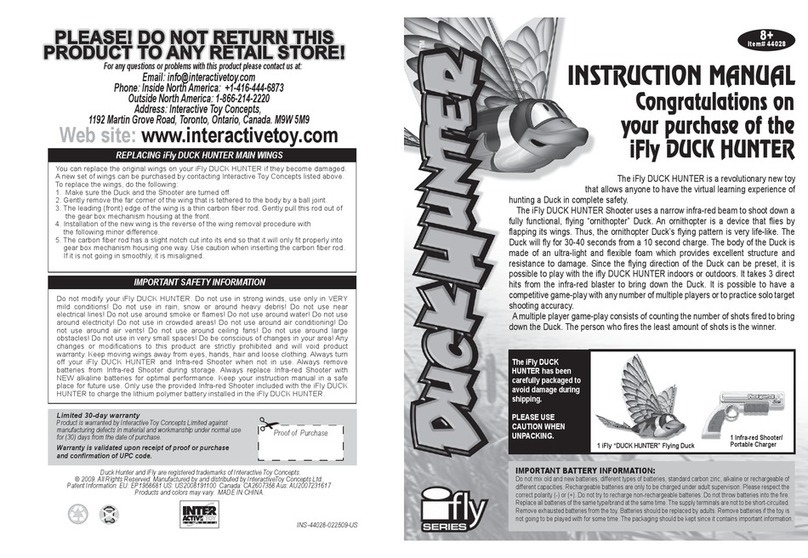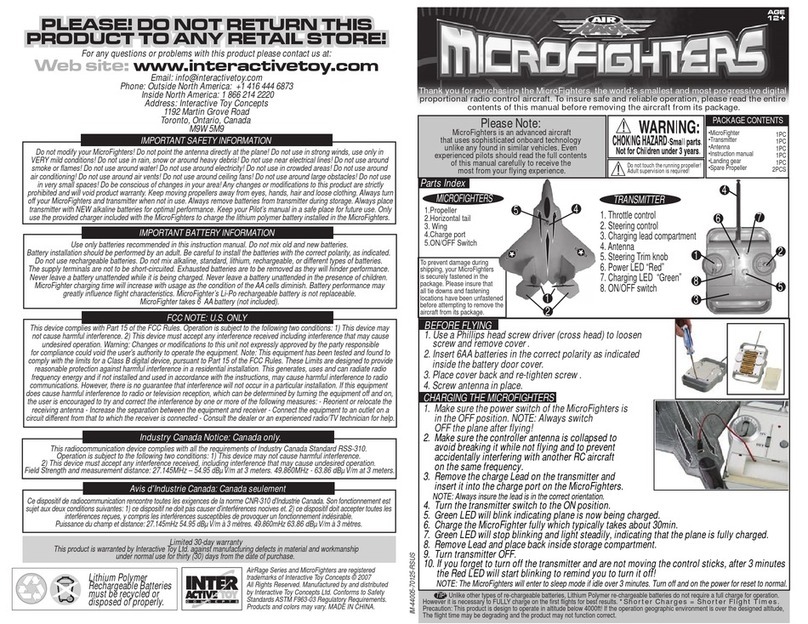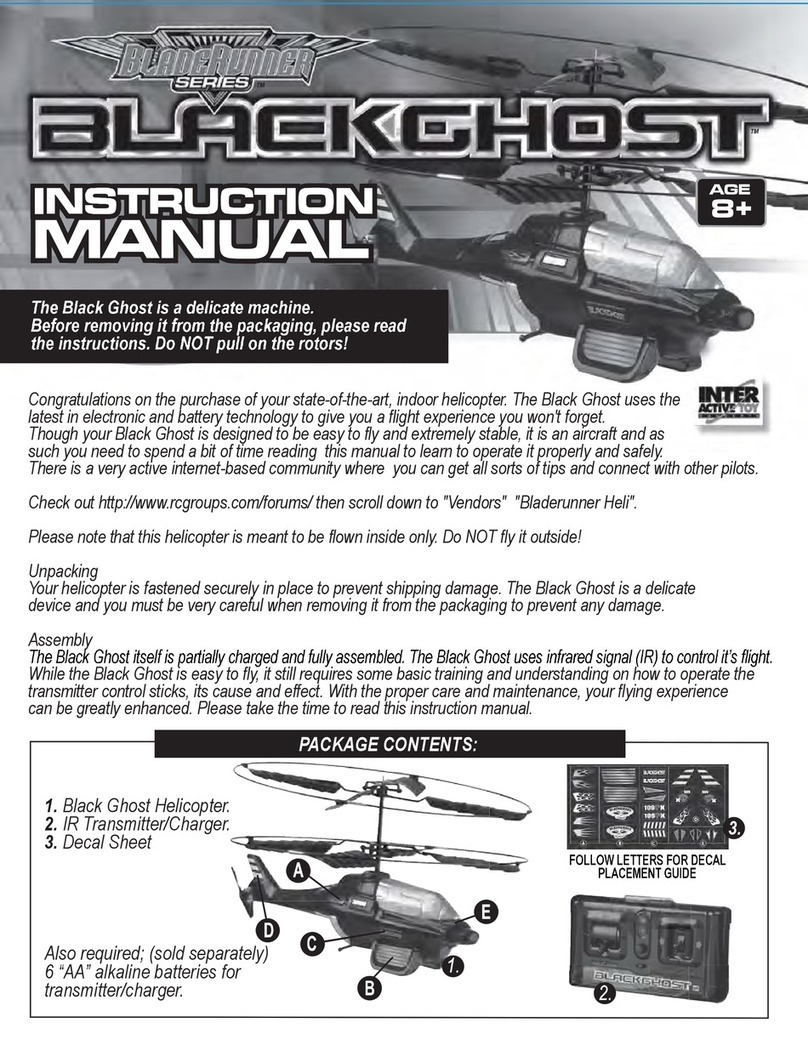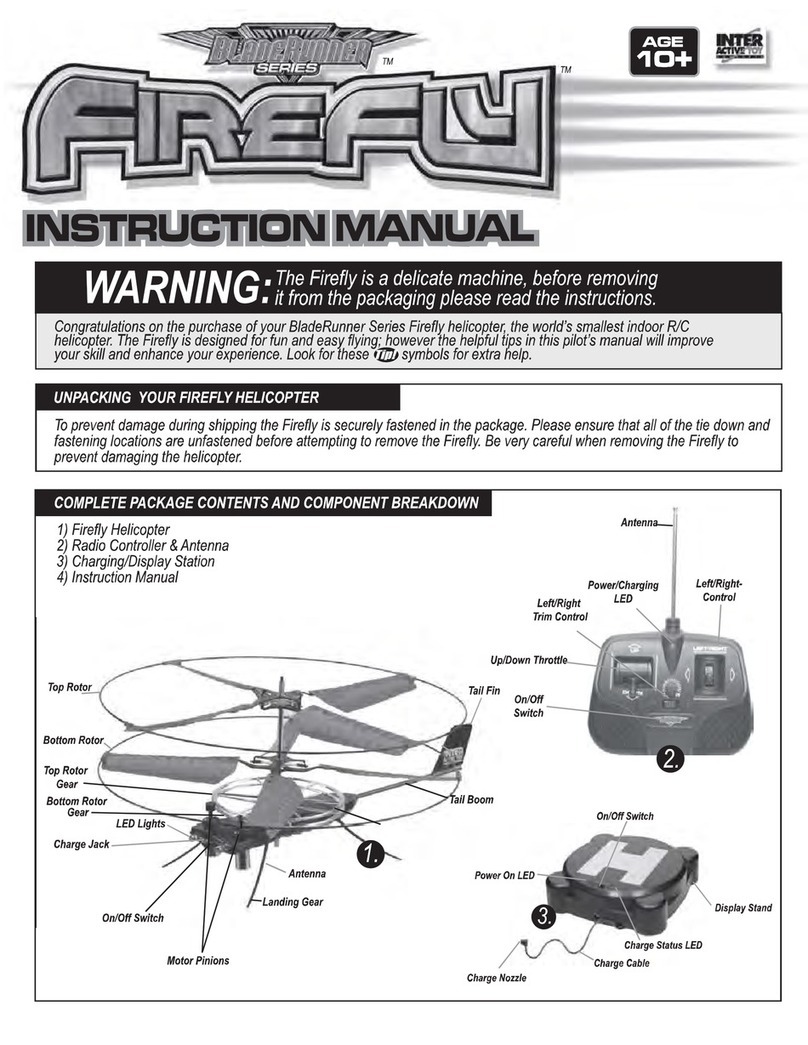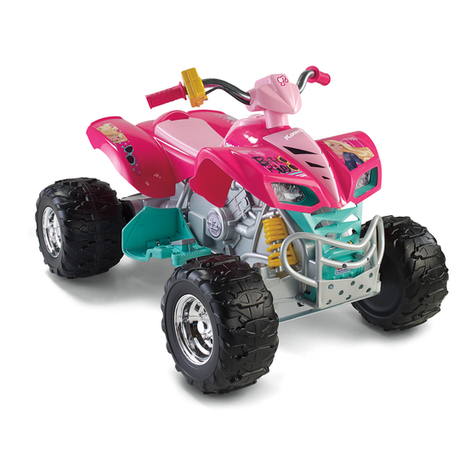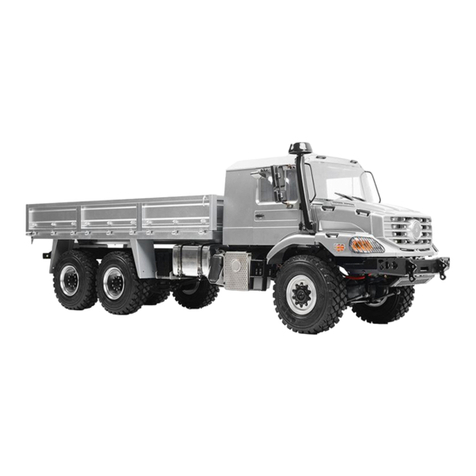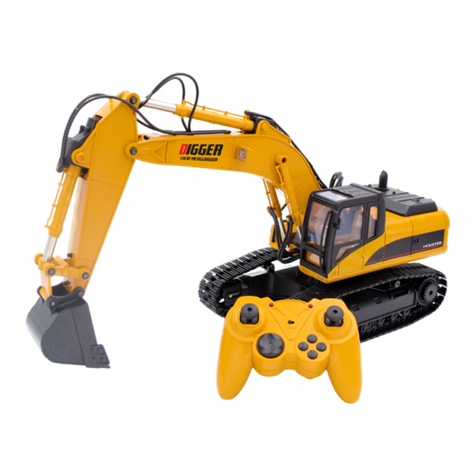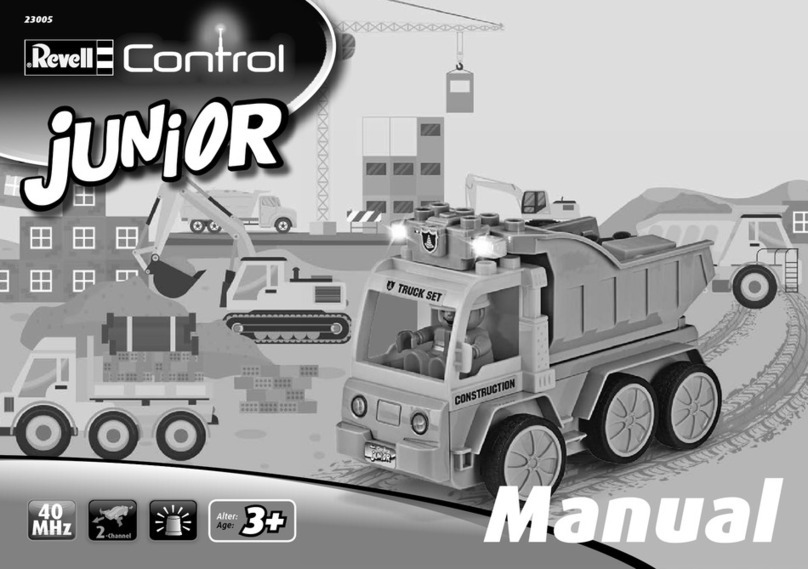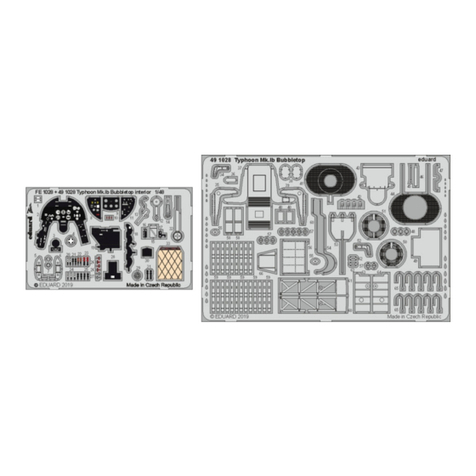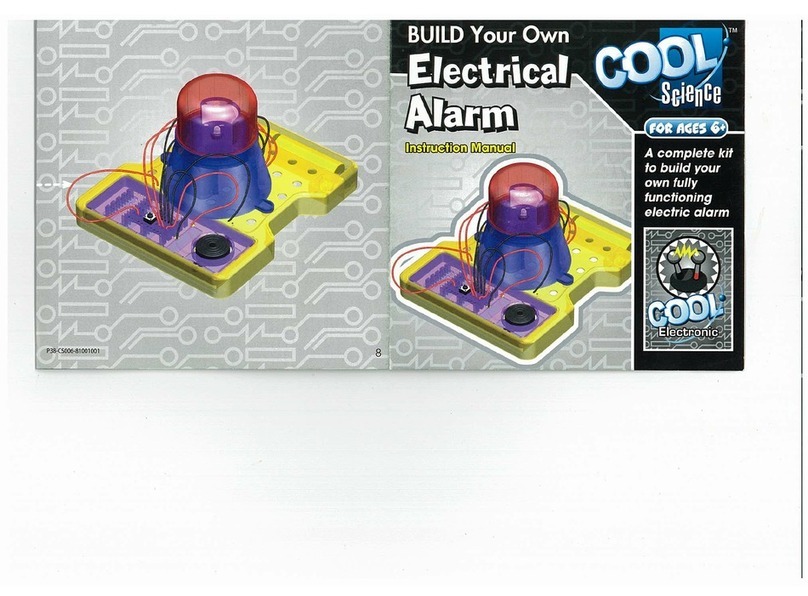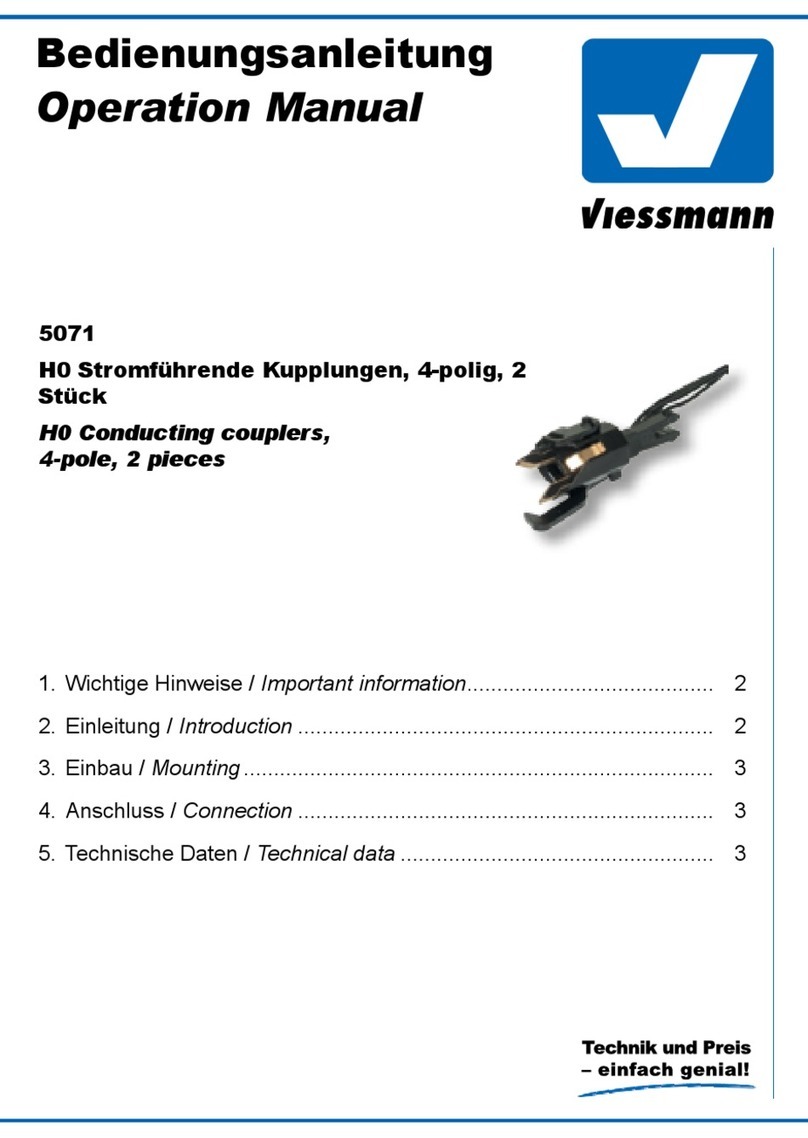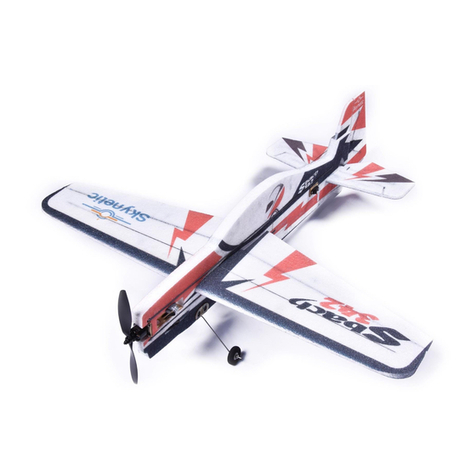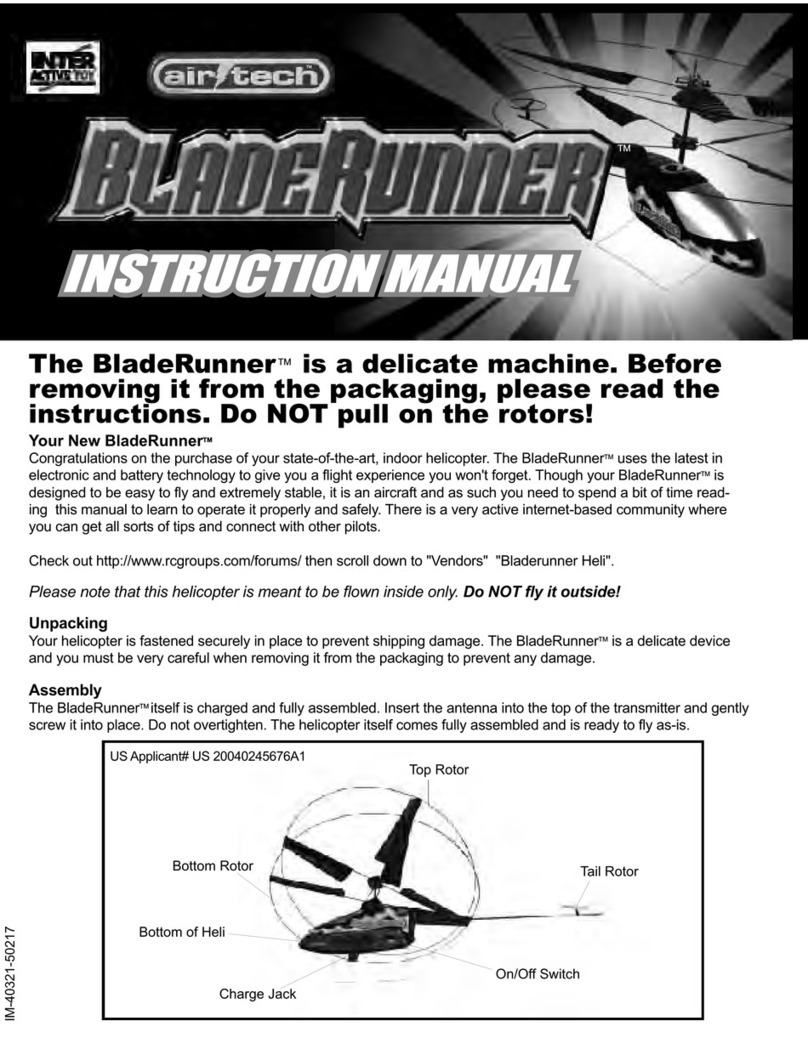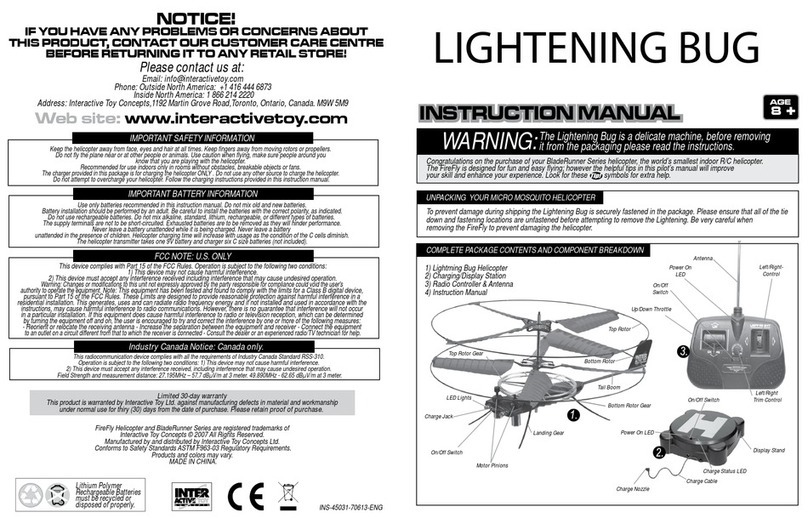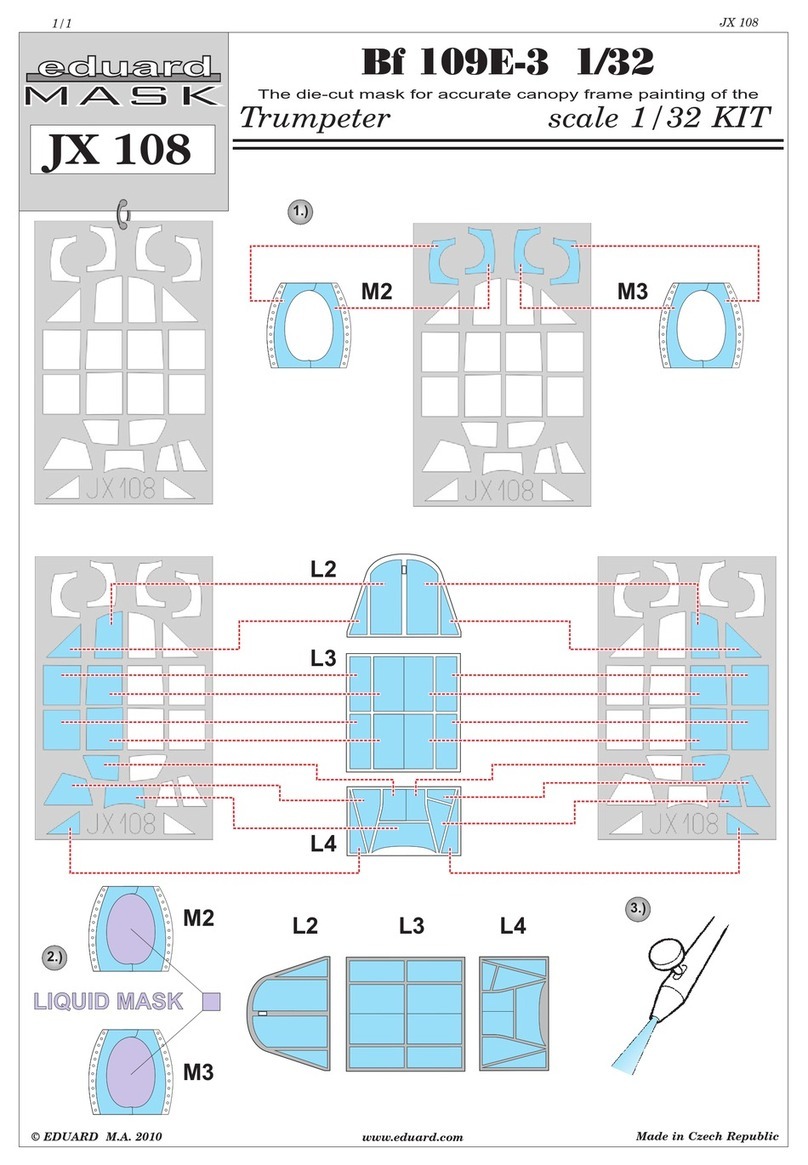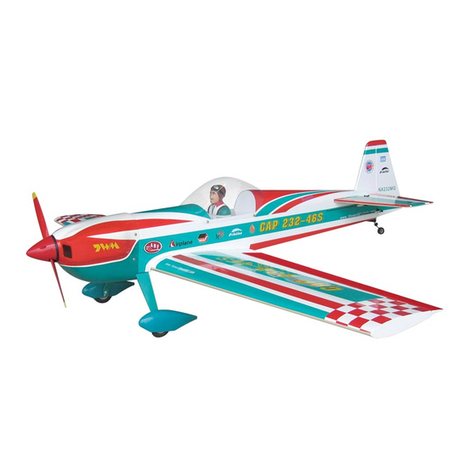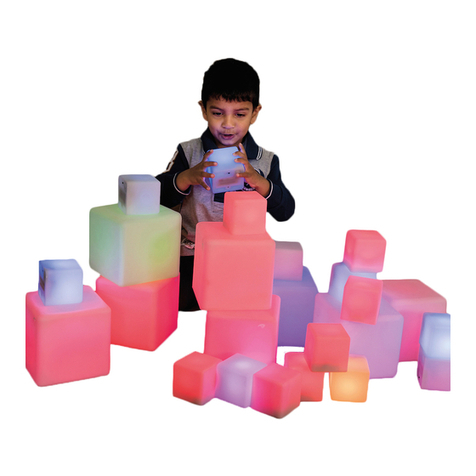Flight
Use the left (throttle)
transmitter stick to control the
aircraft’s altitude; push it
forward to climb, release it to
glide and descend.
The Stealth and Stingray have
excellent glide characteristics,
if you release the throttle
stick, your aircraft will glide for quite a distance. It is not necessary to
keep the throttle on at all times. Give the plane brief bursts of power to
climb then cut the power and let it glide for a few seconds.
To turn the Stealth and the
Stingray, move (and quickly
release) the steering stick in
whichever direction you wish
the model to turn (repeat as
many times as necessary to
turn in the desired direction).
DO NOT hold the stick in the
turn - it must be pulsed on and
off. If you hold the stick
without pulsing it, the aircraft will turn sharply and quickly lose altitude.
Use only brief bursts of steering control.
Get the aircraft to a safe altitude then let it glide. Play with the controls,
get a feel for it’s performance characteristics.
Keep the plane from getting too far away from you. As it gets farther
away, it becomes more and more difficult to determine the model's
orientation and its direction of flight.
Try to keep the aircraft at a height of several hundred feet so that you
have enough time and altitude to react in case you make a mistake. Start
learning to fly by flying oval circuits in front of yourself. Concentrate on
keeping the plane under constant control and try not to lose too much
altitude during the turns. Do not let the aircraft fly over your head - it is
very disorienting for beginner pilots to follow the aircraft as it passes
overhead and can easily lead to an accident. After you have become
proficient at racetrack-style ovals, learn to fly rectangles, then figure-8s.
Always keep the aircraft at a safe distance - not so close that it might hit
you if you make a piloting mistake, and not so far that it becomes difficult
to see.
!Control Reversal
Note that all remote controlled models exhibit control reversal when
approaching the ground-based pilot. When the model is moving away
from you and you push the steering stick to the left (for instance) the
model turns left. However when the model is coming towards you and
you push the steering stick to the left, the model appears to turn to the
right - this is very confusing for students! Though the model is
responding correctly, it appears to be turning in the "wrong" direction.
If you look at this from the model's perspective though (imagine
yourself in the pilot's seat), the model is in fact still turning left. You
must get used to this apparent reversal of controls so that your reactions
are instinctive regardless of the direction of the aircraft's flight. In the
beginning, it might help to turn your back to the aircraft and look over
your shoulder, when it is coming towards you.
Landing
Your Stealth or Stingray will fly for about 7 minutes on a fully charged
battery pack. We suggest that during your first few flights you land before
the battery runs out. This will give you some maneuvering ability in case
your approach is not quite right.
During your first few flights, try shutting off the motors by letting the
throttle control stick return to neutral momentarily. This will give you an
idea of how the aircraft reacts with no power.
When you are ready to land, approach the landing area from downwind
so that you are landing into the wind. When you are a couple hundred feet
from your landing zone, gently straighten the aircraft up and allow the
wings to level out. Turn off the motors - the aircraft will start to descend.
If it looks like you will land short of the landing area, give the aircraft a
couple short burst of power to extend the glide. As the aircraft descends,
use brief bursts of steering control (right stick) to control direction. The
aircraft will almost land itself.
After the Flight
Switch off your transmitter and then switch off your aircraft. Open the
aircraft’s battery compartment and remove the battery pack. Allow it to
cool to room temperature. This is very important! The battery will be
quite warm after it's rapid discharge during the flight and if you charge it
immediately, before allowing it to cool, you will damage the battery.
Check the plane thoroughly for any damage and be sure to repair
anything that might need to be repaired prior to flying again.
Repairs
The Stealth and the Stingray are very rugged but of course can be
damaged if overly abused. Crashes happen to even the best pilots. Don't
despair if something needs to be repaired - this is a necessary part of the
model aircraft experience and in most cases repairs are easy to
accomplish. If there are crack or breaks in the wing or fuselage, apply 5-
minute epoxy or white glue to the broken areas. Hold the parts together
with clear packaging tape and allow the glue to cure. You can leave the
tape in place for added strength. In some cases, strong tape alone, will be
enough to make the aircraft flight-capable again. Note that cyanoacrylate
(i.e. Krazy Glue™) will melt the foam of the aircraft - do not use this type
of glue! If you are unsure of the suitability of the glue, you should test the
glue on a hidden piece of the plane’s body prior to commencing repairs.
Replacement Parts
If you need to, you can order replacement parts directly from us via
telephone or email. Please call (416) 444-6873 or send email to
info@interactivetoy.com
Warranty
Interactive Toy Concepts guarantees your Stealth or Stingray to be free
from manufacturing defects for a period of 90 days from date of
purchase. This warranty does not cover any modifications or parts
damaged by the owner. In no case will Interactive Toy Concepts' liability
exceed the original cost of the kit. Interactive Toy Concepts reserves the
right to change this warranty without notice. Interactive Toy Concepts
assumes no liability over final assembly or for any damage resulting from
the use of this product. If the buyer is not prepared to accept the liability
associated with use of the Stealth or Stingray, he/she should return it in
unused condition to the place of purchase.
We reserve the right to make improvements to the design of the Air-Tech
Stealth and Stingray. Thus, your aircraft may vary slightly from that
depicted in the preceding photographs.
Battery Recycling & Disposal
It may be illegal to dispose of the NiMH battery in your municipal waste.
The battery pack contains a chemical known to the State of California to
cause birth defects or other reproductive problems. Do not try to open the
battery pack!
3UM-13251-20717
FCC Note: USA only
This device complies with Part 15 of the FCC Rules. Operation is
subject to the following two conditions:
1) This device may not cause harmful interference
2) This device must accept any interference received, including
interference that may cause undesired operation.





